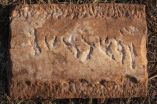(Press-News.org) NEW YORK, May 25, 2012 – Ben-Gurion University of the Negev (BGU) researchers have created a man-made oasis in the desert with the successful application of a solar-powered desalination system that provides water for irrigation in arid regions. The project was made possible with support from American Associates, Ben-Gurion University of the Negev (AABGU).
The solar-powered system uses nanofiltration membranes to treat the local brackish (saline) water, resulting in high-quality desalinated irrigation water. The results of the Josefowitz Oasis Project indicate that irrigation with desalinated water yields higher productivity from water and inorganic fertilizers compared with current practices. Crops grown with desalinated water required 25 percent less irrigation and fertilizer than brackish water irrigation. In some cases, the yield of crops increased.
The findings were presented in a paper at the Conference on Desalination for the Environment in Barcelona late last month by Dr. Andrea Ghermandi of BGU's Zuckerberg Institute for Water Research (ZIWR) on behalf of his colleagues Drs. Rami Messalem (ZIWR), Rivka Offenbach, and Shabtai Cohen of the Central Arava Research and Development Station. The Josefowitz Oasis Project was funded by Samuel Josefowitz, of Lausanne, Switzerland with additional support from The Alliance for Global Good, Greensboro, North Carolina through AABGU.
"The growing global demand for food and competition for resources between economic sectors compel future agricultural systems to be more efficient in the use of natural resources, such as land and water," says Dr. Ghermandi. "In the Middle East, the lack of fresh water promotes the exploitation of marginal quality sources such as brackish aquifers, but the sustainability of the current management practices is questionable."
The research was conducted in the Arava Valley of Israel, south of the Dead Sea at a facility that produces environmentally sustainable crops in arid environments. The Arava basin is extremely dry and its agricultural activities rely extensively on brackish groundwater from local aquifers.
Agricultural experiments with variable irrigation water quality, application rate and four different staple crops were conducted over two growing seasons between September 2010 and June 2011. Nanofiltration membranes allowed for less pumping of energy. The desalination plant operated at low pressure, low energy consumption and with little maintenance required during the period.
The researchers also used red beet, a salt-tolerant crop, to successfully consume the liquid wastes of the pilot facility over two growing seasons. This demonstrates that the moderately saline concentrate waste from brackish water desalination can be a useable byproduct.
"The Alliance for Global Good, generously supported by Leonard Kaplan, has been a partner of ours for a year now and is focused on innovation and research to solve global problems," explains American Associates, Ben-Gurion University of the Negev Executive Vice President Doron Krakow. "The Josefowitz Oasis Project has the potential to help quench the thirst of a very parched world."
###
American Associates, Ben-Gurion University of the Negev
American Associates, Ben-Gurion University of the Negev plays a vital role in sustaining David Ben-Gurion's vision, creating a world-class institution of education and research in the Israeli desert, nurturing the Negev community and sharing the University's expertise locally and around the globe. With some 20,000 students on campuses in Beer-Sheva, Sede Boqer and Eilat in Israel's southern desert, BGU is a university with a conscience, where the highest academic standards are integrated with community involvement, committed to sustainable development of the Negev. For more information, please visit www.aabgu.org.
Ben-Gurion U. researchers successfully test solar desalination system for arid land agriculture
2012-05-28
ELSE PRESS RELEASES FROM THIS DATE:
OSIRIS-REx scientists measure Yarkovsky effect
2012-05-28
Scientists with the University of Arizona-led asteroid sample return mission OSIRIS-REx have measured the orbit of their destination asteroid, 1999 RQ36, with such accuracy they were able to directly determine the drift resulting from a subtle but important force called the Yarkovsky effect – the slight push created when the asteroid absorbs sunlight and re-emits that energy as heat.
The new orbit for the half-kilometer (one-third mile) diameter 1999 RQ36 is the most precise asteroid orbit ever obtained, OSIRIS-REx team member Steven Chesley of the NASA Jet Propulsion ...
Cedars-Sinai physician definitively links irritable bowel syndrome and bacteria in gut
2012-05-28
LOS ANGELES (May 25, 2012) – An overgrowth of bacteria in the gut has been definitively linked to Irritable Bowel Syndrome in the results of a new Cedars-Sinai study which used cultures from the small intestine. This is the first study to use this "gold standard" method of connecting bacteria to the cause of the disease that affects an estimated 30 million people in the United States.
Previous studies have indicated that bacteria play a role in the disease, including breath tests detecting methane – a byproduct of bacterial fermentation in the gut. This study was the ...
From stem cell to brain cell – new technique mimics the brain
2012-05-28
A new technique that converts stem cells into brain cells has been developed by researchers at Lund University. The method is simpler, quicker and safer than previous research has shown and opens the doors to a shorter route to clinical cell transplants.
By adding two different molecules, the researchers have discovered a surprisingly simple way of starting the stem cells' journey to become finished brain cells. The process mimics the brain's natural development by releasing signals that are part of the normal development process. Experiments in animal models have shown ...
Like curry? New biological role identified for compound used in ancient medicine
2012-05-28
CORVALLIS, Ore. – Scientists have just identified a new reason why some curry dishes, made with spices humans have used for thousands of years, might be good for you.
New research at Oregon State University has discovered that curcumin, a compound found in the cooking spice turmeric, can cause a modest but measurable increase in levels of a protein that's known to be important in the "innate" immune system, helping to prevent infection in humans and other animals.
This cathelicidin antimicrobial peptide, or CAMP, is part of what helps our immune system fight off various ...
Phone contact with nurses linked with better outcomes for women with gestational diabetes
2012-05-28
OAKLAND, Calif., May 25, 2012 – Among women with gestational diabetes mellitus, referral to a telephone-based nurse management program was associated with lower risk of high baby birth weight and increased postpartum glucose testing, according to Kaiser Permanente researchers.
Investigators for the Kaiser Permanente Northern California Division of Research examined the associations between referral to telephone-based nurse consultation and outcomes in 12 Kaiser Permanente medical centers with variation in the percent of patients referred to telephonic nurse management. ...
A new invading sea crab reaches the Ebro Delta
2012-05-28
Originally endemic to the Atlantic Coast of North America, over the past 30 years Dyspanopeus sayi has been involuntarily introduced in the UK, France, the Netherlands, the Black Sea and the Adriatic Sea. A study shows that in recent years the sea crab has established itself along the Western Mediterranean Coast.
A team of Spanish and German researchers have recorded the first American Dyspanopeus sayi sea crab in the bay of Els Alfacs in the Ebro Delta (Spain). Both sexes were captured along with many ovigerous females (carrying eggs) in different areas and different ...
First study to suggest that the immune system may protect against Alzheimer's changes in humans
2012-05-28
Recent work in mice suggested that the immune system is involved in removing beta-amyloid, the main Alzheimer's-causing substance in the brain. Researchers have now shown for the first time that this may apply in humans.
Researchers at the Peninsula College of Medicine and Dentistry, University of Exeter with colleagues in the National Institute on Aging in the USA and in Italy screened the expression levels of thousands of genes in blood samples from nearly 700 people. The telltale marker of immune system activity against beta-amyloid, a gene called CCR2, emerged as ...
Autopsy of an eruption: Linking crystal growth to volcano seismicity
2012-05-28
How processes below a volcano are linked to seismic signals at the surface is described by scientists from the petrology group of the Ruhr-Universität Bochum and their colleagues from Bristol in a paper published today in Science. They analyzed the growth of crystals in the magma chamber and used results obtained from the monitoring of seismic signals. The research could ultimately help to predict future volcanic eruptions with greater accuracy.
Like tree rings: Crystals in a magma chamber
A few kilometers below the volcano a liquid reservoir exists, the magma chamber, ...
Picture release: More than meets the eye
2012-05-28
VIDEO:
Depicting each copy of COPI as a triangle, the different arrangements of these building blocks become easier to spot.
Click here for more information.
These spheres may look almost identical, but subtle differences between them revealed a molecular version of the robots from Transformers. Each sphere is a vesicle, a pod that cells use to transport materials between different compartments. The images, produced by Marco Faini from John Briggs' lab at the European Molecular ...
Oldest Jewish archaeological evidence on the Iberian Peninsula
2012-05-28
On a marble plate, measuring 40 by 60 centimetres, the name "Yehiel" can be read, followed by further letters which have not yet been deciphered. The Jena Archaeologists believe that the new discovery might be a tomb slab. Antlers, which were found very close to the tomb slab in the rubble gave a clue to the age determination. "The organic material of the antlers could be dated by radiocarbon analysis with certainty to about 390 AD," excavation leader Dr. Dennis Graen of the Jena University explains. "Therefore we have a so-called 'terminus ante quem' for the inscription, ...



